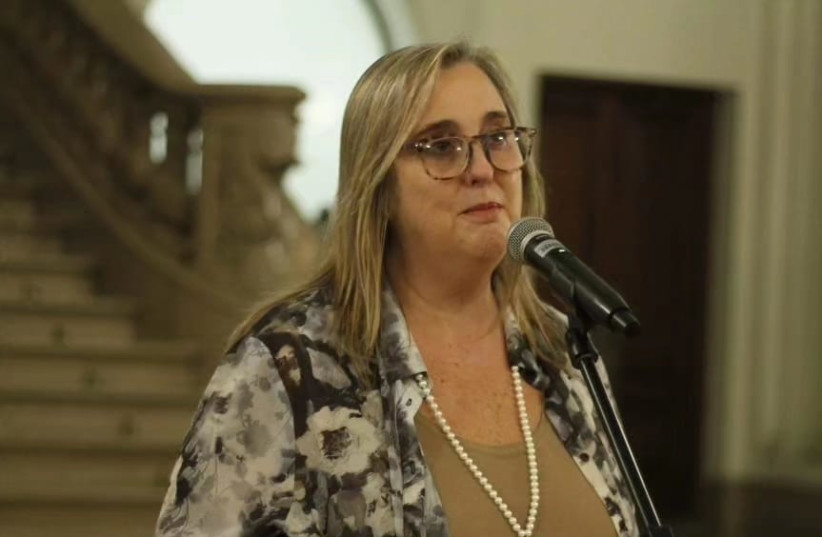The Simon Wiesenthal Center recently inaugurated an exhibition entitled “Nazi Euthanasia of People with Disabilities: The First Victims of Hitler” in Buenos Aires, according to a Tuesday announcement.
The exhibit exposed the Nazi program “Aktion T4” wherein Nazis systematically murdered more than 300,000 disabled people.
The exhibition, which is being shown in the Buenos Aires City Council Hall until Friday, is part of a contribution by the Wiesenthal Center to the Argentine Bicentennial.
What was Aktion T4?
Aktion T4 was a euthanasia program institutionalized in Nazi Germany at the outset of World War II. It started in 1939, about two years before the Nazis began systematically murdering Europe's Jews as part of the "Final Solution," according to the United States Holocaust Memorial Museum.
The program was motivated by the belief that eugenics was the way to ensure the racial integrity of Germany and the lands occupied by the Nazis.
Aktion T4, which was initiated by Philopp Bouler, the director of Hitler's private chancellery, and Karl Brandt, Hitler's attending physician, began by targeting disabled children. On August 18, 1939, a law was passed that essentialized medical personnel reporting babies and infants with signs of mental or physical disability. In October 1939, parents were encouraged to surrender their disabled children to specialized clinics, where they would be killed by lethal overdose or starvation. Eventually, the program was extended to disabled youth up to the age of 17 years old.
Adult disabled people were gassed in six different chambers, according to USHMM.
Official statements on the exhibition
María Fabiana Loguzzo, the Argentinian ambassador to the International Holocaust Remembrance Alliance (IHRA) and representative for Combating Antisemitism, stressed that "these exhibitions must be a reminder of the level of dehumanization reached by extreme ideologies.”
Loguzzo went on to issue a statement condemning Argentinian society’s silence and complicity before and during the planning and practice of Aktion T4.
Dr. Ariel Gelblung, Director of the Wiesenthal Center for Latin America, added that the "family men who kissed their children before going to work took the victims to their final destination, bought lethal gas, harassed the corpses by trading their remains and they lied to the relatives.”
“Faced with social protests, all these personnel were reassigned to the execution of "The Final Solution", leaving the murder in the hands of their own psychiatrists, who were meant to cure the ill.”

She then concluded: “If this whole story scandalizes us, it is because fortunately, we live in a society that promotes coexistence in diversity. A project of many different ones in front of a model that promoted a society of few who think alike, by getting rid of the different ones forever.”
Gelblung later told the Jerusalem Post that “It is necessary to continue to learn about this issue. The methods of gassing people were tried first in the ill.”
“When the program was scaled down, many of the staff were sent to Poland to serve in death camps. Franz Stangl was deputy Director of Hadamar in Austria. After he built Sobibor and commander of Treblinka. He escaped to Brazil, was found by Simon Wiesenthal, prosecuted in Germany, and died in prison.”
The Chair of the Human Rights Commission of the City Council and hostess of the event, Deputy Victoria Montenegro closed the inauguration ceremony by stating “those who are politically or institutionally responsible are and seek to discuss how much money a person with disability costs to the State. After 40 years of democracy, we cannot allow this kind of discussion to be possible. We all deserve to be respected and the State must have a much greater presence in the lives of those who need it the most.”

